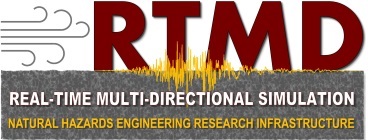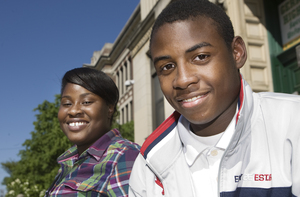Germantown High students get all shook up on field trip
May 14, 2008
One day after a devastating 7.9-magnitude earthquake shook China, killing at least 12,000, a group of Germantown High School students visited Lehigh University to learn how engineers build bridges and other structures to withstand the shocks of tremors.
The 31 10th-graders visited the Real Time Multi-Directional Testing Facility at the ATLSS engineering research center and laboratory at Lehigh.
They were accompanied by their geometry teacher, Randy Conley, and by Jessa Ellenburg, an engineer with the Philadelphia firm Urban Engineers Inc., which donated $700 for the trip.
At the university, laboratory director Gary Novak pulled up the United States Geological Survey Web site in a PowerPoint presentation “that brought up a map of the entire world,” Ellenburg said yesterday.
“When he asked them, ‘What do you think this square is?’ they all knew, they said, ‘China,’ ” Ellenburg said. Lehigh’s research and testing center is part of a national, shared-use research facility for the earthquake-engineering community.
It’s known as the Network for Earthquake Engineering Simulation – or NEES – program of the National Science Foundation. The site is at www.nees.org.
When the students returned to Germantown High School at about 3:30 yesterday afternoon, they were still revved-up about what they had seen.
“It was great,” said Shaneil Dunn, 16. “I learned a lot about earthquakes, and how engineers have to build bridges and buildings to make them safe.
“Now geometry class makes sense,” she said.
Timothy Carter, 17, said he was glad “to learn about things I didn’t know before.”
He said he wants to improve his geometry grades so that he can possibly work as an engineer someday.
Both students said that they had no real interest in geometry before Ellenburg visited their geometry class last fall to talk about her work designing bridges.
“I talked about what math does in the real world, how earthquake research applies to bridges and how important it is to get good grades in math so they will be able to study this in college,” she said.
Ellenburg’s current assignment with Urban Engineers is to design one of the bridges as part of the project to widen the Northeast Extension of the Pennsylvania Turnpike.
She called yesterday’s trip to Lehigh University “extraordinary.”
“It was wonderful,” Ellenburg said. “They loved this stuff and they eat it up. Also, it’s a plug for college and graduating from high school.”



